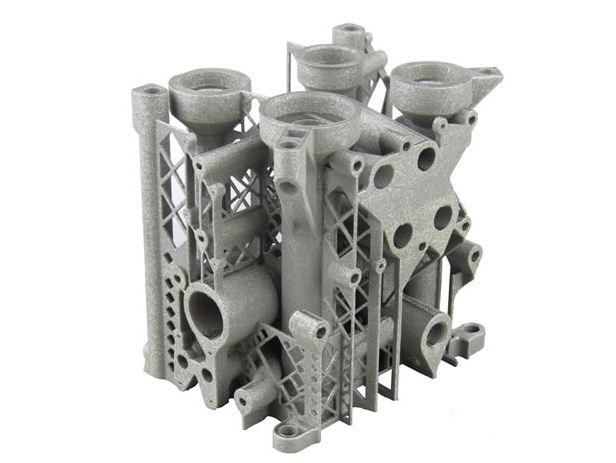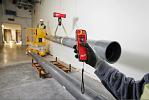- FMA
- The Fabricator
- FABTECH
- Canadian Metalworking
The 3D Printing Predicament
It’s important to distinguish among different types of 3D printing technologies.
- By Robin Weston
- November 16, 2015
- Article
- Measurement
In an industry report published in 2014, PricewaterhouseCoopers surveyed 100 industrial manufacturers of all sizes to better grasp their views on 3D printing.
The results showed that two thirds of manufacturers were already implementing the technology in some way—from experimenting with how it could be used within their operations to employing it for prototypes or even final part production. Furthermore, one in four manufacturers surveyed said they planned to adopt 3D printing at some point in the future.
These results reflect the progress our company (Renishaw) has seen in recent years in its additive manufacturing (metal 3D printing) business. We’re being approached by more and more companies from different manufacturing sectors, keen to find out exactly what benefits 3D printing could offer. This is probably the best attitude when it comes to any new technology: explore its capabilities and understand how it can benefit you before making a purchasing decision.
3D printing has masses of potential but it’s not the quick fix some would have you believe. Even though global 3D printing revenues have grown three fold since 2009, when it comes to adoption for direct part manufacturing, the technology is still comparatively underutilised.
Different technologies
It’s important to distinguish among different types of 3D printing technologies. For example, we specialize in metal powder bed fusion, a metal 3D printing process capable of producing fully dense parts directly from 3D computer aided designs (CAD). Our laser melting process uses a high powered ytterbium fibre laser to fuse fine metallic powders together and form functional three dimensional parts. The beam is focused to less than the diameter of a human hair, creating temperatures high enough to fully weld the materials.
Our AM250 machine is already used in medical applications, including orthopaedics and dental, aerospace and industrial part production. Currently, the most common uses of additive manufacturing are prototype creation, the manufacturing of complex geometries and low volume manufacturing of elaborate metal parts in specialist materials.
The main advantages of additive manufacturing across industry sectors are optimized part design, customization and the ability to produce highly complex geometries, without additional cost.
Establish potential
In November 2013, The Institution of Engineering and Technology, based in the UK, named 3D printing (additive manufacturing) as one of the key technologies it expects to deliver economic growth in a report entitled ‘Ones to Watch’. In that report, Dr Phil Reeves, then managing director of specialist 3D printing consultancy Econolyst, explained, “At the moment, about 80 per cent of the machines in existence are used for prototyping and 20 per cent for production. However, that 20 per cent of machines on the shop floor are in constant use.”
Our company is confident that the figure of 20 per cent for production applications is set to increase as more and more manufacturing companies unlock the benefits of the technology for direct part manufacturing.
It’s important to keep in mind that not all products designed for traditional manufacturing methods will be suitable for additive manufacturing, but when a redesign is possible, the end product is usually lighter, stronger and requires fewer components.
Simple, straight-forward parts like bearings and bolts or larger parts like cabinets and panels are rarely suitable for additive manufacturing. Yes, they can be produced using the technology, but it’s often more economic to employ traditional manufacturing methods.
To see the real benefits of additive manufacturing, companies should evaluate it on a product whose design can be improved in some way. Tooling inserts featuring conformal cooling channels, lightweight structures for aerospace or medical devices that improve patient care—this is where the design freedom of additive manufacturing becomes invaluable.
Adopting 3D printing for manufacturing requires careful planning and research. It is important to keep in mind the challenges you might face; additive manufacturing is still limited in terms of the materials it uses and the size of the parts it can produce.
Furthermore, the technology’s new found design freedom also means a company needs to have CAD skills and a willingness to design for the process. Often, employees need to be trained and educated before they can unlock the true benefits.
As with all manufacturing technologies, standards play an integral part of the adoption process. The fact that additive manufacturing standards are still at the incipient stage can result in lengthier quality and inspection processes, with the additional risk that non-uniform practices and customs develop causing uncertainty about the ‘right’ approach.
Although we have seen some very encouraging signs from ISO and the American Society for Testing and Materials (ASTM) F42 committee, it could take a number of years to compile satisfactory harmonized standards.
It’s probably fair to say 3D printing is not the universal panacea some in the wider media have been expounding. However, industry predictions show the adoption of additive manufacturing technology is building momentum. Since 2009 the industry has tripled to $3 billion and is tipped to be a $20 billion industry by 2020. The wisest decision manufacturers can make at this stage is to investigate exactly what advantages additive manufacturing could bring to their company. If it looks promising, the next step would be to get in touch with a specialist and arrange a trial for the technology.
Additive manufacturing is, without question, a technology to watch in 2016 and beyond, just as the IET suggests.
Robin Weston is the Marketing Manager for Renishaw’s Additive Manufacturing Products Division.
About the Author
subscribe now


Keep up to date with the latest news, events, and technology for all things metal from our pair of monthly magazines written specifically for Canadian manufacturers!
Start Your Free Subscription- Industry Events
MME Winnipeg
- April 30, 2024
- Winnipeg, ON Canada
CTMA Economic Uncertainty: Helping You Navigate Windsor Seminar
- April 30, 2024
- Windsor, ON Canada
CTMA Economic Uncertainty: Helping You Navigate Kitchener Seminar
- May 2, 2024
- Kitchener, ON Canada
Automate 2024
- May 6 - 9, 2024
- Chicago, IL
ANCA Open House
- May 7 - 8, 2024
- Wixom, MI





















